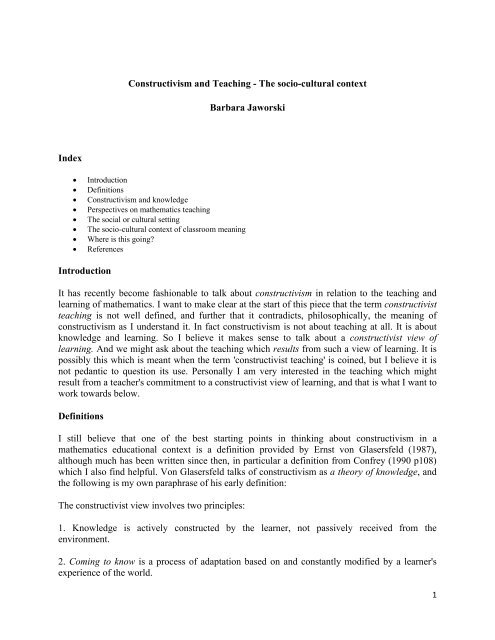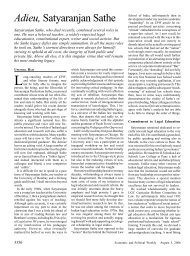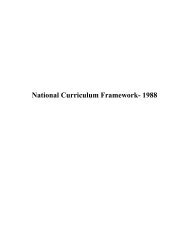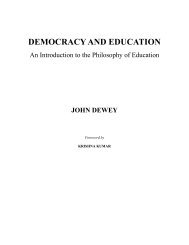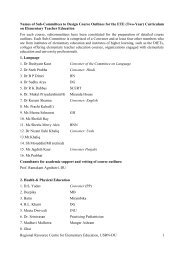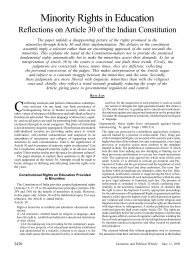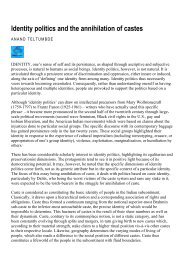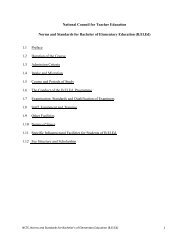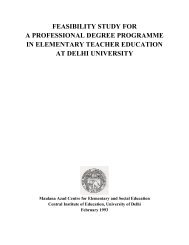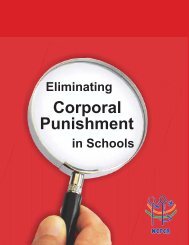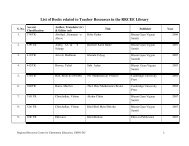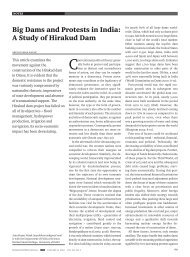Constructivism and Teaching - The socio-cultural context ... - Eledu.net
Constructivism and Teaching - The socio-cultural context ... - Eledu.net
Constructivism and Teaching - The socio-cultural context ... - Eledu.net
You also want an ePaper? Increase the reach of your titles
YUMPU automatically turns print PDFs into web optimized ePapers that Google loves.
<strong>Constructivism</strong> <strong>and</strong> <strong>Teaching</strong> - <strong>The</strong> <strong>socio</strong>-<strong>cultural</strong> <strong>context</strong>Barbara JaworskiIndexIntroductionDefinitions<strong>Constructivism</strong> <strong>and</strong> knowledgePerspectives on mathematics teaching<strong>The</strong> social or <strong>cultural</strong> setting<strong>The</strong> <strong>socio</strong>-<strong>cultural</strong> <strong>context</strong> of classroom meaningWhere is this going?ReferencesIntroductionIt has recently become fashionable to talk about constructivism in relation to the teaching <strong>and</strong>learning of mathematics. I want to make clear at the start of this piece that the term constructivistteaching is not well defined, <strong>and</strong> further that it contradicts, philosophically, the meaning ofconstructivism as I underst<strong>and</strong> it. In fact constructivism is not about teaching at all. It is aboutknowledge <strong>and</strong> learning. So I believe it makes sense to talk about a constructivist view oflearning. And we might ask about the teaching which results from such a view of learning. It ispossibly this which is meant when the term 'constructivist teaching' is coined, but I believe it isnot pedantic to question its use. Personally I am very interested in the teaching which mightresult from a teacher's commitment to a constructivist view of learning, <strong>and</strong> that is what I want towork towards below.DefinitionsI still believe that one of the best starting points in thinking about constructivism in amathematics educational <strong>context</strong> is a definition provided by Ernst von Glasersfeld (1987),although much has been written since then, in particular a definition from Confrey (1990 p108)which I also find helpful. Von Glasersfeld talks of constructivism as a theory of knowledge, <strong>and</strong>the following is my own paraphrase of his early definition:<strong>The</strong> constructivist view involves two principles:1. Knowledge is actively constructed by the learner, not passively received from theenvironment.2. Coming to know is a process of adaptation based on <strong>and</strong> constantly modified by a learner'sexperience of the world.1
It does not discover an independent, pre-existing world outside the mind of the knowerKilpatrick (1987), referring to von Glasersfeld's principles, suggests "<strong>The</strong> first principle is one towhich most cognitive scientists outside the behaviourist tradition would readily give assent, <strong>and</strong>almost no mathematics educator alive <strong>and</strong> writing today claims to believe otherwise. <strong>The</strong> secondprinciple is the stumbling block for many people. It separates what von Glasersfeld calls trivialconstructivism ... from the radical constructivism which is based on the acceptance of bothprinciples."It seems to me that the power of constructivism for mathematics education is encapsulated in thissecond principle. To relate this (briefly) to the learning of mathematics, it seems to say that ifthere is some independent, pre-existing body of mathematical knowledge we cannot know itexcept through our own experience, <strong>and</strong> we can only know what we ourselves have constructed,<strong>and</strong> modified according to further experience. For a detailed account of these ideas I recommendvon Glasersfeld (1984) <strong>and</strong> (1987). It is important to point out that constructivism makes noontological claims. In particular it does not dismiss the possibility that there is some pre-existingbody of mathematical knowledge. It only claims that if there is, we can never know it in anyabsolute sense. (For further discussion of this, see Davis <strong>and</strong> Mason, 1989)<strong>Constructivism</strong> <strong>and</strong> knowledgeIt has been pointed out (e.g. Noddings 1990) that constructivism raises serious questions from anepistemological position. What does it mean, for example, to talk of individual construction as'knowledge'? Noddings gives an example of a student, Benny, who had developed a particularprocess of calculation which satisfied him. This process could be seen by mathematicians ofwider experience than Benny to be inadequate. Is there any sense in which Benny's process couldbe regarded as knowledge?Epistemologists are often as concerned with the status of knowledge, <strong>and</strong> in particular what istruth, as with the experience of knowing. A constructivist view of knowledge is that it 'fits'experience. If that experience changes, the knowledge may need to be modified. Von Glasersfeldgave an example of a key fitting a lock. In order to open a lock it is not necessary for a key tomatch the lock ñ only to fit it. Many keys will fit a particular lock. However, when we want toopen a lock which our key will not fit, it is necessary to get another key.When we come up against circumstances which challenge our experience, we need to modify ourexpectations. For example, I might 'know' that radiators are good for warming h<strong>and</strong>s. When Iplace my h<strong>and</strong>s on a boiling hot radiator, <strong>and</strong> burn them, I have to modify my expectations ofradiators. In future I might test the radiator gently to gauge its heat, before placing my wholeh<strong>and</strong> on it. I could thus be seen to have modified my knowledge of radiators.<strong>The</strong> following anecdote was told by Rita Nolder from one of her experiences as a mathematicsadvisory teacher:In a class of 11 year olds working with SMP, the teacher was going around helping students.Rita, feeling redundant, was listening to two boys working with the SMP book on angle. <strong>The</strong>y2
were looking at a diagram of two triangles (i) with angles of 45,45,90 <strong>and</strong> (ii) with angles of30,60,90.One boy said to the other "This one's a triangle [the first], <strong>and</strong> this one isn't [the second]".<strong>The</strong> boy speaking seemed to have some image or concept of a triangle which included the firsttriangle, but not the second. Now, Rita believed that both objects were triangles. <strong>The</strong> boy madehis construction according to his own experience. So did Rita. We might say that the boy waswrong <strong>and</strong> Rita was right. But this is to make judgements about truth without taking into accountthe circumstances from which the statements arise. What was the boy's experience which led tohis statement? Why did he believe that the second shape was not a triangle?<strong>The</strong> <strong>context</strong> in which a statement is made is crucial to the validity of the statement, <strong>and</strong> it is verydifficult to say therefore when any statement is true without knowing this <strong>context</strong>. We might, forexample, be tempted to say that an object with angles adding up to more than 180° could not be atriangle. However, a triangle on the surface of a sphere could fit this criterion. In plane geometrywe might feel happy with the statement that the angles of a triangle add up to 180°. So, tounderst<strong>and</strong> the boy's statement in Rita's anecdote, it would be helpful to locate the discourse in awider <strong>context</strong>, although this might be quite difficult to elicit.A consequence of pupil talk <strong>and</strong> teacher listening is that the teacher is able to glean a sense of theorigins of pupils' ideas <strong>and</strong> to challenge these in some way if it seems appropriate. Teachersoften use such situations to advantage in creating 'cognitive dissonance' ñ for example, inoffering an example which fits the conditions but not the results of some piece of reasoning.S<strong>and</strong>y Dawson (1991) talks about ways of using classroom dialogue to challenge mathematicalpreconceptions in a Lakatosian tradition contributing to what he calls fallibilistic teaching.Rita might have asked the boys why the second figure was not a triangle, <strong>and</strong> could havefollowed up her question with further examples <strong>and</strong> situations for the boy to consider, possiblyextending his experience <strong>and</strong> causing him to modify his knowledge. This might be described as'challenging the student's misconceptions', but. if there are 'mis'conceptions, what then is aconception? Is this some form of knowledge which the 'mis'conception is not? Can a conceptionbe independent of the person or circumstance of the conceiving?Noddings' response to questions such as this is to recognise that constructivism cannot of its verynature make any statement about the status of knowledge, <strong>and</strong> so she claims that constructivismis post-epistemological. Von Glasersfeld, in the same volume, accepts Noddings' position <strong>and</strong>modifies his own language, talking of constructivism as a theory of knowing rather than a theoryof knowledge.Perspectives on mathematics teachingWhat is it that we think we are doing when we set out to teach mathematics in the classroom?<strong>The</strong> following two examples highlight particular perspectives on mathematics teaching:3
ï <strong>The</strong>re has recently been much discussion of the teaching of mathematics at primary level interms of a move to whole class teaching in ability sets, rather than a small group, possiblythematic, approach which builds on individual experience.ï We recently had an HMI inspection at Oxford in which criticism was made of a very theoreticaloffering, by PGCE interns, of statistical formulae as basis for a lesson on statistics to Year 12students.Why might a move to the formality of whole class teaching of mathematics at primary schoolcause some disquiet? If we want Year 12 students to know some statistical formulae, what iswrong with a straightforward, abstract, presentation of the formulae? <strong>The</strong>se two examples seemto offer contradictory views. <strong>The</strong> suggestion for primary teaching seems to be that less influencebe placed on creating <strong>context</strong>s for mathematics, <strong>and</strong> more on presenting mathematics as a formalbody of knowledge. <strong>The</strong> HMI criticism was of a formal offering which did not pay any attentionto <strong>context</strong>s in which such statistical formulae might be of value.In both cases what seems crucial is mathematical meaning, <strong>and</strong> the making of meaning. Perhapsmeaning is only possible when what is offered has somewhere to 'fit', so that students canconstruct something which makes sense to them. If the Year 12 students cannot make sense ofthe statistical formulae, what does the lesson achieve? Perhaps what is needed to assist thissense-making is the creation of some associated <strong>context</strong> which the students can appreciate. Inprimary teaching, the use of a thematic approach might be seen to provide <strong>context</strong>s from whichabstract mathematical ideas might arise <strong>and</strong> be meaningful to pupils. On the other h<strong>and</strong> a wholeclass approach with a more formal presentation of mathematics need not deny the importance ofmeaning. This relies heavily on the pupils' experiences on which the formal approach depends inorder to be meaningful.A problem arises when a teacher wants students' constructions to make sense in her terms; whenconstructions, meaningful to pupils, may not be adequate for the wider <strong>context</strong>s which she has inmind. This raises questions about compatibility of knowledge between all participants in theteaching/learning enterprise. It is not so much a case of what is right or wrong, but how close arethe conceptions of the various participants.<strong>The</strong> social or <strong>cultural</strong> setting<strong>The</strong> social environment of the classroom is good at throwing up constraints which challengeindividual perceptions. People often have different views of a situation. If these views seemincompatible, there is a need for reconciliation which can lead to the social mediation ofindividual knowledge. Through discussion or argument, the participants negotiate new positionswhich leads to shared meanings developing. Such negotiation is not bargaining, but a genuineoffering of individual perspectives <strong>and</strong> meanings for consideration by others. It involves makingan effort to listen to <strong>and</strong> underst<strong>and</strong> other perspectives. As a result common , or 'taken-as-shared'(Voigt, 1991) meanings develop in a classroom.No classroom environment is an isolated box. It is part of a wider community (of school <strong>and</strong>beyond) which has <strong>cultural</strong> practices <strong>and</strong> social norms. <strong>The</strong>re are therefore acts or actions or4
activities which happen because they are part of this <strong>socio</strong>-<strong>cultural</strong> setting. This includesmathematical, educational <strong>and</strong> social acts as well as combinations of these. Lave <strong>and</strong> Wenger(1991) talk of a community of practice to encompass the customs, social <strong>and</strong> <strong>cultural</strong>, of aparticular community <strong>and</strong> its ways of operating. We can envisage a mathematical community ofpractice which has its established (even ritual) acts, <strong>and</strong> the classroom environment draws onthese, modifies them for its own use <strong>and</strong> ritualises its own practices.A few examples might make this clearer:Pupils st<strong>and</strong>ing when an adult enters a classroom is part of a school's social rituals;Teachers asking pupils questions to which the teachers already know the answers is partof the culture of teaching mathematics (e.g. Pimm, 1987);Performing the operation of multiplication before that of addition in a computation is amathematical custom;Making assumptions that classroom geometry is Euclidean is part of classroommathematical culture.I have deliberately thrown around words like social, <strong>cultural</strong>, ritual, custom to emphasise thebases of some of the acts or actions we take for granted within certain social or <strong>cultural</strong> settings.We might argue that all acts are socially embedded, <strong>and</strong> that all objects associated with such actsare <strong>cultural</strong> tools. For example, the custom of using exposition <strong>and</strong> practice in the teaching ofmathematics might be seen as part of the <strong>cultural</strong> practice of traditional mathematics teaching. Itwas largely taken for granted until challenged by individual teachers seeking to implement amore investigative approach, <strong>and</strong> ultimately by the Cockcroft report which pointed to itslimitations. <strong>The</strong> blackboard <strong>and</strong> chalk might be seen in this <strong>context</strong> as <strong>cultural</strong> tools. <strong>The</strong>ir use iswidely understood, <strong>and</strong> no one in a classroom doubts what they are or why they are there. <strong>The</strong>use of chalk by a teacher as a missile for waking up dreaming students has largely disappearedfrom classroom <strong>cultural</strong> practice as a result of changes to educational norms. <strong>The</strong> use of chalk inthis way nowadays could result in a serious challenge to these norms.<strong>The</strong> wider cultures in which the school is situated impinge on the classroom in ways oftenunnoticed because of participants' familiarity with them. However, a teacher recently pointed toan issue which had become important in her classroom. She noticed the hyperactivity of a pair ofAsian boys ñ highly participative, very dem<strong>and</strong>ing of attention, very voluble ñ as compared tothe very passive, quiet, undem<strong>and</strong>ing, self-effacing behaviour of Asian girls in the same class.She recognised that she wanted to influence these behaviours to enable the girls to participatemore fully, <strong>and</strong> hopefully achieve more. This could mean requiring the boys to be moreconsiderate, less dem<strong>and</strong>ing <strong>and</strong> more disciplined in their work. She also recognised that suchrequirements might contradict the <strong>cultural</strong> expectations of these girls <strong>and</strong> boys in their familyenvironments. While wanting to respect their culture, she wanted to change their manifestationof it in her classroom in order to achieve better mathematical learning (as she saw it) for all.<strong>The</strong> <strong>socio</strong>-<strong>cultural</strong> <strong>context</strong> of classroom meaningIn order to consider meaning-making in mathematics classrooms for participants, bothindividually <strong>and</strong> collectively, we have to recognise its dependence on individual experience <strong>and</strong>5
<strong>socio</strong>-<strong>cultural</strong> practices. This is the subject of an area of study known as Activity <strong>The</strong>ory,originated by Russian psychologists in the Vygotskian tradition, <strong>and</strong> developed with ratherdifferent emphases by <strong>socio</strong>-<strong>cultural</strong> theorists in the United States <strong>and</strong> Europe. Referring toLeont'ev (1981), Crawford (1991) suggests that Activity <strong>The</strong>ory "describes the process throughwhich knowledge is constructed as a result of personal (<strong>and</strong> subjective) experience of an activity.Leont'ev stresses the inseparability of human mental reflection from those aspects of humanactivity that engender it."<strong>The</strong> relationship between a constructivist approach to mathematics teaching <strong>and</strong> social <strong>and</strong><strong>cultural</strong> norms in mathematics classrooms is explored by Cobb et al. (1991). <strong>The</strong>ir paper offers acritique of Activity-<strong>The</strong>ory, both in its Russian <strong>and</strong> American manifestations, <strong>and</strong> in particularthe related <strong>socio</strong>-<strong>cultural</strong> movement currently exciting educational interest in the United States.<strong>The</strong>y address the work of Ilyenkov, in the Russian school, who suggests that 'objects as <strong>cultural</strong>tools serve as carriers of meaning' ñ i.e. carrying meaning for their use in a practice. <strong>The</strong>seobjects include formal mathematical symbols, <strong>and</strong> so 'these symbols are for him (Ilyenkov)<strong>cultural</strong> tools that carry meaning'. A consequence of this is the view that 'children's developmentof abstract mathematical thought is supported by instruction designed to engage them in thesocial practice of using formal symbols'.This reminds me of the classroom work of David Hewitt (Open University, 1991) involving his'rulers' activity to influence students' perceptions of algebra <strong>and</strong> their familiarity with formalsymbols. It is well known (e.g. Kuchemann, 1981) that pupils have difficulty with the abstractuse of symbols <strong>and</strong> their manipulation. Hewitt's very stylised approach is designed specifically toovercome such difficulty by creating a social practice in which symbol manipulation is logical<strong>and</strong> meaningful <strong>and</strong> in which attention is attracted away from the symbols <strong>and</strong> their use, ratherthan towards them.Socio-<strong>cultural</strong> theorists view learning as integration into a community of practice (for exampleLave <strong>and</strong> Wenger, 1991) in which social actions are identified (for example the mathematicalmanipulation of abstract symbols according to given conventions) <strong>and</strong> classroom activitiesdesigned (for example the rulers activity). Cobb et al suggest that "the teacher's role in thisactivity is to forge the last link in the chain by ensuring that children execute the specified socialactions that make it possible for them to isolate ideal mathematical forms when they solve tasks".Social actions are seen to be more broadly based than social interactions. Thus the interactions ofchildren in classroom activities are a small part of their enculturation into the required socialactions. This is reminiscent of Bruner's work on scaffolding, with the teacher performing the roleof 'consciousness for two' (to do for students what they cannot yet do for themselves) in relationto Vygotsky's Zone of Proximal Development. (See for example, Bruner, 1985)Where is this going?I run the risk of trivialising a very complex area by being so brief <strong>and</strong> stopping here. What I findexciting about the links between constructivism <strong>and</strong> <strong>socio</strong>-<strong>cultural</strong> theory is the potential toexplain children's development of mathematical knowledge in terms of its individual <strong>and</strong> socialconstruction under the influence of social <strong>and</strong> <strong>cultural</strong> practices. In particular I am interested inthe teacher's role in this process, having considered the implications of a constructivist6
philosophy for mathematics teaching through a close study of the work of individual teachers(Jaworski 1991). I am worried by notions of 'integration into a community of practice' whichseem to suggest an apprenticeship model of learning which subordinates the learner toestablished practices. On the other h<strong>and</strong>, empowerment of the learner may only be possible oncecompatibility with <strong>and</strong> confidence in established practices is achieved. <strong>The</strong> patterns which Iobserved in my research pointed to the development of autonomy of the learner, but theteaching/learning process involved had to produce learners who could work confidently withinthe norms of the conventional curriculum <strong>and</strong> its national assessment since their only means ofdemonstrating their success publicly was via this system.I should like to summarise the relationships outlined above by viewing learning as the individualconstruction <strong>and</strong> social mediation of knowledge within a community of practice. Thus:1 Knowing is an action participated in by the learner. Knowledge is not received from anexternal source.2 Learning is a process of comparing new experience with knowledge constructed from previousexperience, resulting in the reinforcing or adaptation of that knowledge.3 Social interactions within the learning environment are an essential part of this experience <strong>and</strong>contribute fundamentally to individual knowledge construction.4 Shared meanings develop through negotiation in the learning environment, leading to thedevelopment of common or 'taken-as-shared' knowledge5 Learning takes place within some <strong>socio</strong>-<strong>cultural</strong> setting - a 'community of practice' in which wecan think of social actions as well as social interactions.<strong>The</strong> fifth point here is weak, <strong>and</strong> reflects my worries about the links between constructivism <strong>and</strong><strong>socio</strong>-<strong>cultural</strong> theory. However, one crucial te<strong>net</strong> of constructivism is missing from the fivepoints, <strong>and</strong> that is the radical nature of constructivism in that it deliberately says nothing ofontology. In my study (1991), I have elaborated the tensions which arise for teachers in workingwith absolutist knowledge paradigms, in the form of mathematics curricula, from a constructivistperspective. Viewing knowledge as a social construction in terms of the social actions of acommunity of practice may be one way of reconciling these tensions in theory. This raisesquestions about the practical manifestations of such reconciliation.One place to start might be through re-analyses of classroom situations which researchers havedescribed from a constructivist perspective, looking this time through a <strong>socio</strong>-<strong>cultural</strong> lens.I am interested in pursuing these ideas further with interested others within the UK.I am grateful to John Mason for discussion around many of the issues highlighted here.7
References:Bruner, J.S. 'Vygotsky: a historical <strong>and</strong> conceptual perspective', in J.V. Wertsch (ed.) Culture,Communication <strong>and</strong> Cognition : Vygotskian perspectives. Cambridge, Cambridge UniversityPress.Cobb, P. Perlwitz, M. Underwood, D (1991) <strong>Constructivism</strong> <strong>and</strong> Activity <strong>The</strong>ory: Aconsideration of their similarities <strong>and</strong> differences as they relate to mathematics education.Unpublished draft.Confrey, J. (1990) 'What constructivism implies for teaching', in Davis, Maher <strong>and</strong> Noddings(Eds.) Constructivist views on the teaching <strong>and</strong> learning of mathematics. JRME Monograph,Reston, Virginia, NCTMCrawford, K. (1991) Cultural processes <strong>and</strong> learning: expectations actions <strong>and</strong> outcomes. Paperpresented to the Cultural Perspectives Subgroup of the <strong>The</strong>ory Group at ICME 7, Quebec.Davis P.J. <strong>and</strong> Mason J.H. (1989) 'Notes on a radical constructivist epistomethodology applied todidactic situations', Journal of structured learning, Vol. 10 157-176Dawson, S. (1991) 'Learning mathematics does not (necessarily) mean constructing the rightknowledge', in Pimm <strong>and</strong> Love (eds.) <strong>Teaching</strong> <strong>and</strong> Learning School Mathematics. London:Hodder <strong>and</strong> StoughtonJaworski, B. (1991) Interpretations of a constructivist philosophy in mathematics teaching.Unpublished PhD <strong>The</strong>sis. Milton Keynes: Open UniversityKilpatrick, J. (1987) 'What constructivism might be in mathematics education' in Proceedings ofPME XI, MontrealKuchemann, D. (1981) 'Algebra', in Hart, K. (ed.) Children's underst<strong>and</strong>ing of mathematics 11-16. London: John MurrayLave, J. <strong>and</strong> Wenger, E. (1991) Situated learning: legitimate peripheral participation. NewYork: Cambridge University PressLeont'ev, A. N. (1981) '<strong>The</strong> problem of activity in psychology' in J. Wertch (ed.) <strong>The</strong> concept ofactivity in Soviet psychology. U.S. : M.E. SharpeNoddings, N. (1990) ' <strong>Constructivism</strong> in mathematics education', in Davis, Maher <strong>and</strong> Noddings(Eds.) Constructivist views on the teaching <strong>and</strong> learning of mathematics. JRME Monograph,Reston, Virginia, NCTMOpen University (1991) (videotape) Working Mathematical on symbols in Key Stage 3.(PM647H). Milton Keynes: Open University8
Pimm, D. (1987) Speaking mathematically. London: Routledgevon Glasersfeld E. (1984) 'An introduction to radical constructivism'. In P. Watzlawick (ed.) <strong>The</strong>invented reality. London: W. W. Naughton & Co.von Glasersfeld E. (1987) 'Learning as a Constructive Activity'. In C. Janvier (Ed) Problems ofrepresentation in the teaching <strong>and</strong> learning of mathematics. Lawrence Erlbaum, Hillslade, NJ.von Glasersfeld, E, (1990) 'An exposition of constructivism: Why some like it radical' in Davis,Maher <strong>and</strong> Noddings (Eds.) Constructivist views on the teaching <strong>and</strong> learning of mathematics.JRME Monograph, Reston, Virginia, NCTM9


